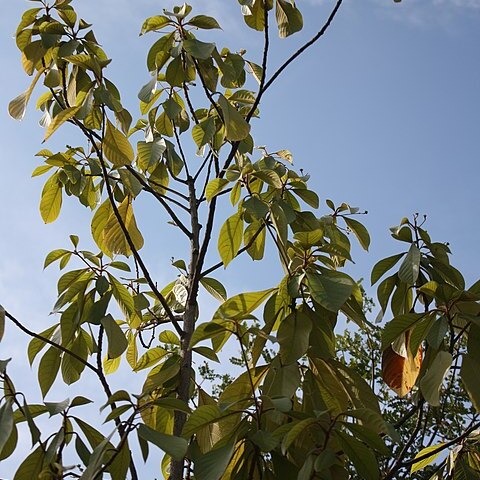Evergreen trees or shrubs. Leaves alternate, the blades triplinerved or sub-triphnerved, occasionally penninerved. Inflorescence paniculate, axillary and usually subterminal; panicles loose or narrow, strict, somewhat racemose, with no involucre. Flowers perfect, pedicellate or occasionally sessile. Perianth-tube short although usually well-defined. Perianth-lobes approximately equal or subequal, occasionally the three outer lobes shorter, usually incurved, rarely reflexed, and, for the most part in Panama, thin in texture. Stamens of all three series with four fertile anther-cells; anther-cells of the two outer series introrse, the two upper cells slightly smaller than the two lower, frequently with inconspicuous con-nective tissue; two lower anther-cells of inner series extrorse, the two upper usually slightly smaller, lateral or at most laterally extrorse; filaments of inner series con-spicuously biglandular. Staminodia well developed, conspicuous, cordate, stipitate, the stipe usually pubescent. Ovary glabrous, usually ellipsoid, occasionally sub-globose. Style cylindrical slender, equal to or shorter than the ovary, glabrous. Stigma usually triangularly discoid or capitate, fairly conspicuous. Fruit a berry, borne in a shallow somewhat fleshy cupule frequently crowned by the remnants of the perianth-lobes, and subtended by the, enlarged pedicel.
More
Evergreen trees or shrubs. Leaves alternate, pinnately veined. Flowers bisexual, cymose paniculate or subracemose. Perianth lobes 6, equal in size or sometimes outer ones slightly short, becoming leathery or woody after flowering. Fertile stamens 9, in 3 series; 1st and 2nd series without glands and with introrse 4-celled anthers; 3rd series with 2 glands and extrorse 4-celled anthers. Staminodes triangular or sagittate. Ovary ovoid or globose; stigma dish-shaped or capitate. Fruit ovoid, ellipsoid, or globose, rarely oblong, base surrounded by persistent and enlarged perianth lobes; fruiting pedicel not thickened or conspicuously thickened.

